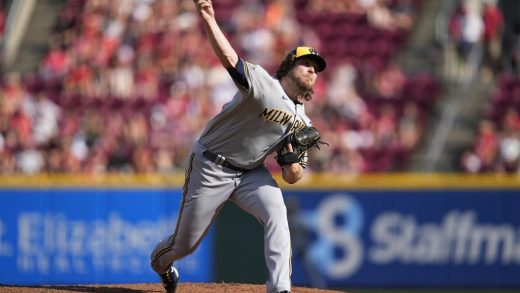Belmont Park winter racing to take place on a synthetic surface when the track reopens in 2026

Winter racing at Belmont Park will take place exclusively on a synthetic surface when the New York track reopens in 2026, a move made with the hope of keeping horses and jockeys safer and improving year-round conditions when also running on dirt and turf.
The New York Racing Association unveiled its plans for the future of Belmont Park’s surfaces Monday, including a one-mile oval made of wax-coated sand, fibers and recycled rubber known by the trademarked name Tapeta. Gulfstream Park in South Florida has been using Tapeta since 2021.
“The technology has evolved, and the maintenance practices and the equipment used to maintain it have evolved with the surfaces,” NYRA executive VP of operations and special projects Glen Kozak told The Associated Press by phone Tuesday. “We’ve been going over this for 10 years on what our options could be and what’s the right thing to do for racing, for the horses, for the jockeys, and to give us the future-proofing, the work for the industry with what we’re doing here.”
According to data from the Equine Injury Database, fatalities on synthetic surfaces last year were much lower: 0.97 per every 1,000 starts compared to 1.13 on turf and 1.43 on dirt. The numbers were even more drastic in 2022: 0.41, compared to 0.99 and 1.44.
“NYRA has closely tracked the evolution and application of synthetic surfaces, and the relevant data unequivocally supports a shift to the all-weather surface during the winter months,” president and CEO David O’Rourke said in a news release. “Together with the renovated main track and two new turf courses, Belmont Park will provide a multitude of quality options for both training and racing throughout the year.”
Racing in the New York City area is consolidating to Belmont Park following $455 billion in renovations that will entirely transform the home of the third jewel of the Triple Crown with everything from the track to the infield and a brand new grandstand.
The move to Tapeta in the winter also allows NYRA to renovate the Belmont main dirt track to specifications with a limestone base to make it better for racing in the spring, summer and fall, which otherwise would not be possible because the clay pad freezes at low temperatures. Belmont has had synthetic jogging and pony surfaces for some time, and NYRA officials are designing the new dirt track consistent with completely renovated tracks upstate at Saratoga Race Course.
One benefit of having the synthetic track is the hope that, when it rains, races moved off the turf will have fewer horses scratched because the shift will be to Tapeta, not dirt, a surface that mutes hoofbeats and limits whatever kickback might fly into the air.
“It helps the horsemen, it helps the bettors,” Kozak said. “Having a field that stays together certainly is a lot more attractive. And for an owner and a trainer that have pointed a horse for a specific date, they’re not impacted having to wait X number of time for that race to come back. It is a change of what we’re looking for here at NYRA with the synthetic, but, like everything else, our business is evolving.”
___
AP horse racing: https://apnews.com/hub/horse-racing
Credit: Belmont Park winter racing to take place on a synthetic surface when the track reopens in 2026


